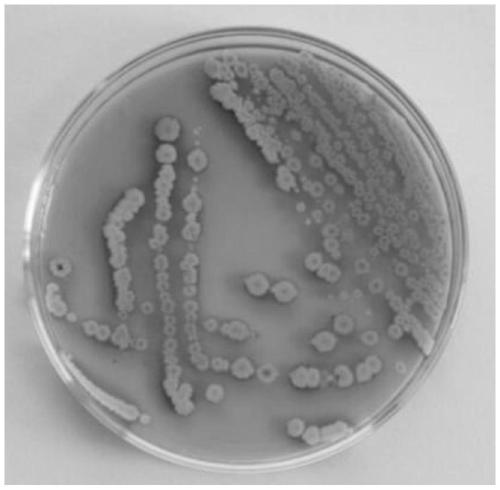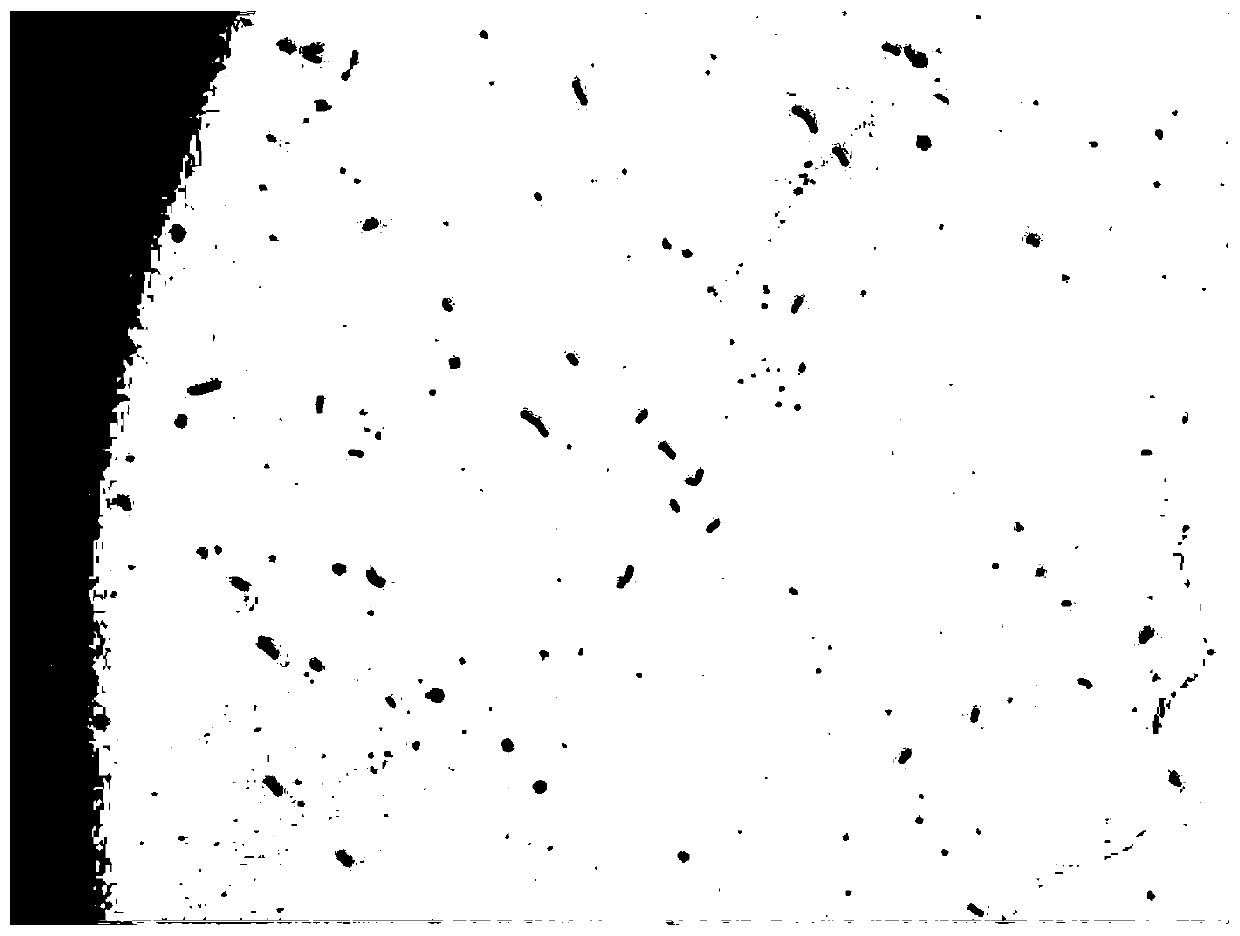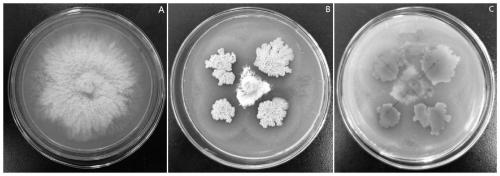Pear blight antagonistic bacterium, biological bactericide and application thereof
An antibacterial and dry disease technology, applied in the directions of biocide, application, biocide, etc., can solve problems such as destroying ecology, affecting food safety, environmental pollution, etc., and achieving the effect of increasing production, major economic benefits, and human and animal safety.
- Summary
- Abstract
- Description
- Claims
- Application Information
AI Technical Summary
Problems solved by technology
Method used
Image
Examples
Embodiment 1
[0020] This example mainly screens and identifies antagonistic bacteria. The specific screening and identification process is as follows:
[0021] 1. Test method
[0022] (1) Strain isolation
[0023] The dilution coating method was used to separate the antagonistic bacteria in the soil. The soil sample was collected from the pear orchard of the Wuwei Academy of Forestry Sciences. 10g of the soil sample was air-dried and sieved (2mm mesh), put into a 250mL Erlenmeyer flask, added 90mL sterile water in a water bath at 80℃ for 30min, and then fully shaken for 30min. Dilute by 10 times. Before the suspension settles and stand still, suck 10mL into another 90mL Erlenmeyer flask, shake well, and dilute to a concentration of 10 -1 g / mL, 10 -2 g / mL, 10 -3 g / mL, 10 -4 g / mL, 10 -5 g / mL, 10 -6 g / mL suspension. Finally take 10 -4 g / mL, 10 -5 Add 0.5 mL of the suspension with a concentration of g / mL to the surface of the prepared PDA medium, spread it on the plate, and cultivate at a constant ...
Embodiment 2
[0040] This example mainly tested the antagonistic mechanism of strain LKYHC-2.
[0041] 1. Test method
[0042] Spot the antagonistic strain LKYHC-2 cultivated for 1 d on casein medium, starch medium, and carboxymethyl cellulose medium, inoculate 3 strains per dish, culture at 30°C for 5 days, and observe whether there is a transparent circle around the colony , The starch medium should be dripped with a few drops of iodine solution before observation; the determination of cellulase activity should be stained with 1g / L Congo red for 10-15min, then the dye solution should be discarded, and then soaked with 1mol / L NaCl for 15min .
[0043] Wherein, the casein medium (1000 mL): 20 g of skimmed milk powder, 5 g of yeast extract, 5 g of glucose, 16 g of agar, 1000 mL of water, pH 7.0.
[0044] The starch medium (1000 mL): 20 g of soluble starch, 10 g of peptone, 5 g of glucose, 5 g of NaCl, 5 g of beef extract, 16 g of agar, 1000 mL of water, pH 7.0.
[0045] The carboxymethyl cellulose m...
Embodiment 3
[0049] In this example, a field test was performed on the strain LKYHC-2.
[0050] 1. Test method
[0051] In April 2017, the pathogen of pear dry blight was inoculated into the stems of young pear trees. In July, a field control experiment of strain LKYHC-2 was carried out. Mancozeb and water treatment were selected as controls. Thoroughly scrape the diseased tissues on the branches of the pear before applying the medicine. The scraped area exceeds the diseased spot by 0.5~1.0cm, and then apply LKYHC-2 fermentation broth, mancozeb and water, once every 10 days for a total of Three times, survey in April of the following year, statistics of cure rate and recurrence rate of disease spots on pear branches of each treatment.
[0052] The preparation of the LKYHC-2 fermentation broth: inoculate the antagonistic bacillus LKYHC-2 into the NB liquid medium, culture at 28°C and 150r / min shaking for 3 days to prepare the LKYHC-2 fermentation broth, dilute with sterile water to a concentratio...
PUM
 Login to View More
Login to View More Abstract
Description
Claims
Application Information
 Login to View More
Login to View More - R&D
- Intellectual Property
- Life Sciences
- Materials
- Tech Scout
- Unparalleled Data Quality
- Higher Quality Content
- 60% Fewer Hallucinations
Browse by: Latest US Patents, China's latest patents, Technical Efficacy Thesaurus, Application Domain, Technology Topic, Popular Technical Reports.
© 2025 PatSnap. All rights reserved.Legal|Privacy policy|Modern Slavery Act Transparency Statement|Sitemap|About US| Contact US: help@patsnap.com



